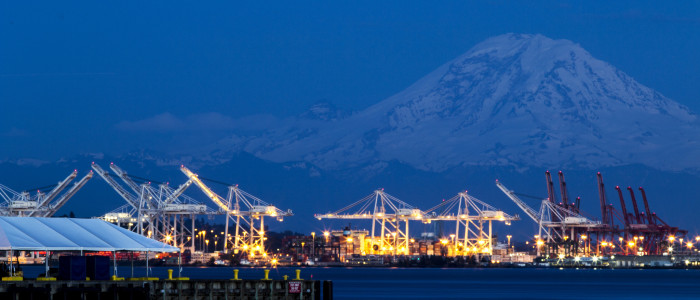The mood out of southern California was positive, despite ocean cargo disruptions and tumbling rates. At the largest Trans-Pacific Maritime conference, top-level executives talked about the rapid climb and descent rates went through post-pandemic. With few ideas on where the balance will fall, carriers look at their service offerings to entice customers to look past price.
While schedule integrity is improving, shippers are still working out kinks regarding fees, blank sailings and capacity on popular voyages. As the trans-Pacific rates tumble, Asia to N. Europe costs are bolstered by disruption and capacity crunches. With the world moving more fully into recovery mode, the rates should bounce back to pre-pandemic levels, though the ports might change.
The US west coast ports lost market share to the east coast, including a banner year for the Port of Norfolk at the Virginia International Gateway. Considering rates will no longer be the driving force and congestion is cleared at the Ports of Los Angeles and Long Beach, the east coast ports will need to prove their mettle against the most capable terminal complex in the nation.
By improving their services and expanding their networks, carriers can improve offerings and eliminate the areas of weaker demand before the trend of blank sailings can disrupt the capacity available. With historically low rates, customers’ first concern is guaranteeing their cargo sails. Rolled bookings are common with price dips as blanked voyages tend to leave everything waiting on the dock. By building more efficient networks, cargo is able to move in a focused and improved manner instead of the slapdash bandaid-on-a-bullet-wound blanking style.
Ocean freight will remain complicated as we continue into a new normal. Having a professional logistics partner on your team will help you see trends coming and work to manage any issues before they arise. Contact us today if you want to know how Nelson International can help keep your sails smooth in the disruption storm.


Comments are closed.